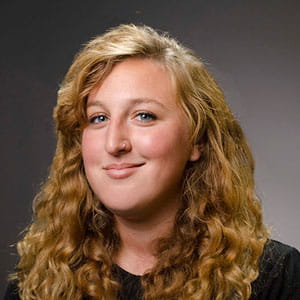An International Co-op Mapping Out the Lungs, and All Chile Has to Offer

As it just so happens, Emily Ballantyne found her second co-op through a connection she made during her first six-month internship at a local startup.
That feat is made even more unusual and serendipitous considering she’s now working 8,000 miles away in a research lab at a Chilean university.
How did that work out? She had heard of Drexel’s recently established exchange agreement with Pontificia Universidad Catolica in Santiago, but wasn’t sure how to fit a term abroad into her busy schedule.
Once she mentioned it to her first co-op’s supervisor during lunch, she suddenly found herself taking the first steps to the international co-op.
“That casual comment over lunch ended up changing my course at Drexel,” she said. “And I couldn't be happier about it.”
It turned out her supervisor had worked with and befriended a professor at Pontificia Universidad Catolica. He passed along his contact information to Ballantyne, who secured a six-month internship at the university’s computational biomechanics and biophysics lab after corresponding with the professor and submitting her CV.
Though the position is unpaid, Ballantyne applied for, and later won, funding from the Whitaker International Program, which financially assists biomedical engineering students while they work or study abroad. She has since changed her major to become a pre-junior mechanical engineering student with a minor in product design, but maintains a strong interest in medical technology.
Ballantyne’s research includes using computational modeling techniques to map out the lungs, whose delicate qualities make it hard for physicians to diagnose and understand lung conditions. Ballantyne hopes her research will help identify the strain in healthy lungs, and eventually be adapted into software used in clinics to diagnose disease.
“We’re collecting and processing data to develop an idea of what a ‘normal’ lung should look like. Then, the methods will be expanded upon and refined in order to be applied to diseased lungs,” she said. “If this succeeds, doctors will have a way to concretely see where ‘hot-spots’ of strain lie, and can more accurately diagnose patients and distinguish between similar lung diseases.”
Ballantyne conducts the work alongside Chilean students and employees in the lab. Papers and coding languages are based in English, but most meetings and work conversations are conducted in Spanish.
Though Ballantyne has taken Spanish classes since middle school and lived with a host family in Spain for a month in 2011, she has adapted to Chilean Spanish, which she describes as “a clipped and quick Spanish, with plenty of slang.” It helps that she’s constantly surrounded by native speakers, both at work and by living a host family before her eventual roommates.
“One of the greatest things I’ve learned from being here so far is how to listen well,” Ballantyne said. “I know it may seem small at first, but I think that all too often we listen to reply, and don’t listen to understand. When I listen to people here speaking in Spanish, I am required to listen to understand. I have to process what the person is trying to tell me, take it in the context that they are intending and only then craft an appropriate response.”
Taking things slowly and savoring the moment is especially crucial to her life in Santiago. When she’s not working, Ballantyne ensures she experiences everything Chile has to offer.
“I feel liberated by not having my iPhone activated while I’m here,” Ballantyne said. “Not having access to 3G or 4G all of the time has let me detach a little bit from the U.S. and live more fully in Chile.”
Of course, she still uses the iPhone to take pictures for her blog, which she frequently updates to reflect her life in her barrio (neighborhood) or during trips around Chile and nearby countries.
Her favorite trip so far was a vacation to Pucón, located in the southern lakes region, with Drexel student Rebecca Olsho. By taking a 10-hour bus ride each way, the students saved enough money to do some “extra adventuring,” like hiking Volcan Villarica, one of Chile's most active volcanoes, all the way to the crater and riding horses through the land of the Mapuche people, Chile’s indigenous population.
In October, she embarked on a six-hour bus ride across the Andes and went to Mendoza, Argentina with some new exchange student friends to visit vineyards and go horseback riding.
She's planning to take one more trip before her return in March, but the destination is yet to be determined. Some options include San Pedro de Atacama in the north, or Chilean Patagonia in the southern tip of Chile.
“I am so grateful to the people I’ve met while abroad that have taken time out of their day to help me or invite me to spend time with them and their friends,” she said. “There is beauty in the struggle to make your way through a city and come out successful, but it makes the journey more amiable and exciting when you have people on your side."
In This Article
Drexel News is produced by
University Marketing and Communications.

